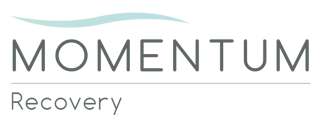It’s hard to deny now: You have a son or daughter that needs addiction treatment. They are acting out, their actions are erratic, and something needs to be done ... now. Without experience, plotting a course of action can leave you feeling anxious, overwhelmed, and unsure. In the mental health and substance abuse field, there are varying levels of care and several types of treatment. One of the biggest concerns in the behavioral health community today is clients not getting the right treatment the first time. This causes a lack of trust in the system and exacerbates underlying problems, creating a compounding effect and a more severe issue that goes untreated. Understanding which level and type of addiction treatment that your child needs is imperative in order to make sure that they are getting the best resources for their specific issue or diagnosis.
How to Choose the Right Young Adult Treatment Program: Levels of Care
There are five primary levels of care (LOC) when it comes to addressing young adult substance use disorder. These levels are based on acuity, starting with the least severe and leading up to the most urgent. You may be familiar with the first level of care, as it became increasingly more in-demand during the COVID pandemic: the virtual intensive outpatient program. In this first level, clients work with clinicians in a group or individual setting from the comfort of their homes using a computer. It is fully remote and usually meets two to three times a week. Lacking 24/7 care and support, this level is only appropriate for clients who are wondering if they may have an addiction issue, but are not daily users and are not physically dependent on substances. The second level of care is known as an outpatient program, and is most similar to meeting with a therapist. Clients meet individually with a clinician weekly or bi-weekly for an hour or two each session. This is best for individuals still in the early stages of substance use, but it provides a level of accountability and personal attention that the virtual intensive outpatient programs do not have.
The third level is the intensive outpatient program. In this LOC, you are still seeing a clinician in person, but you are meeting with them three to five times a week and for several hours at a time. In addition to those 1-on-1 sessions, group therapy sessions and random drug testing are also utilized. Intensive outpatient programs (IOP) are ideal for clients who are suffering from substance abuse, but who have not progressed to the point of physical dependence or needing detox. IOP still requires a high level of accountability and therapy. The final outpatient level is called a partial hospitalization program (PHP). During this level of care, clients are spending their entire day in therapy sessions - usually six to eight hours a day, five days a week. They commute back and forth to treatment daily. They are also randomly drug tested at this level. IOPs and PHPs are a great way to gauge if a loved one truly needs residential treatment. For those unable to stay sober, pass drug tests or stick with the schedule of an intensive outpatient program, a higher level of care is required. For those who can thrive in outpatient care, residential care is often unnecessary.
The final primary level of care is known as residential treatment. In a residential addiction treatment program, clients live at a treatment facility twenty-four hours a day for thirty, sixty, or ninety days or more. This LOC is the most acute level and is designed to remove the person from their environment - and thus their temptations and triggers. It also allows for the most amount of accountability by providing constant supervision and removing the possibility of the alcoholic or addict being able to get more of their drug of choice. You may have heard someone suffering say, “I really want to quit, but I just can’t.” Their use of drugs and alcohol has become a compulsion. At this point, it is in the best interest of your loved one to enter into a residential addiction treatment setting so their mind, body and spirit can start to heal and they can focus entirely on their recovery.
How to Choose the Right Young Adult Treatment Program: Types of Treatment
Now you know the levels of care. It is also important that you are aware of the different types of treatment offered. These vary based on the primary issue for which the client is seeking help. If your loved one is primarily struggling with substance abuse, then they would typically seek out a primary substance use disorder (SUD) treatment program. This kind of program is designed to address the using and abusing of substances, to work through the underlying reasons for their use, and to get your son or daughter involved in a recovery community like the Twelve Step program. In a primary SUD program, mental health is examined as it is related to drug and alcohol use. It is not unusual for untreated mental health primary patients that have overlapping substance abuse to start in a primary mental health program to get psychiatrically stabilized. Then they transition over to a substance abuse primary program where they can focus on addressing the addiction issues.
Dual-diagnosis treatment is the last type of treatment, and it is becoming more accepted in the treatment community as the default type of addiction treatment. Anyone suffering from drug or alcohol abuse usually also has some kind of underlying mental health issue. This is at the core of Momentum Recovery’s treatment values. It is now widely accepted that treating both mental health issues and substance abuse holistically is the best way to provide long-term recovery to clients. To do it any other way can result in a client ping-ponging back and forth between mental health providers and substance abuse providers with each set of resources creating their own treatment plans independent of one another. Mental health and substance abuse go hand-in-hand. It is important that treatment providers are aware of that and are creating a plan that treats both.
How to Choose the Right Young Adult Treatment Program: Now What?
Now, you’re in a position to make a more fully informed decision about what kind of treatment is right for your son or daughter. If you have questions or concerns, our experienced team is here to help. Simply contact us or send a message to get started on a new life for your entire family.

